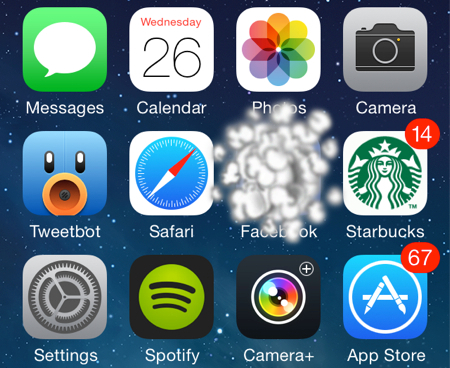Look at the folder structure of a typical OS X installation. Open a Finder window and click the icon for your hard drive (which is typically called Macintosh HD) in the Sidebar. You should see at least four folders: Applications, Library, System, and Users. Within the Users folder, each user has his own set of folders containing documents, preferences, and other information that belongs to that user and account.
If you’re a Mac user looking for the best InDesign alternatives for Mac, we’ve got you covered.In this article, we’ll outline some of the best free InDesign alternatives for Mac. We’ve included a detailed breakdown of each InDesign alternative for Mac, looking at some of the pros and cons of each tool, as well as their prices and system support. Popular Alternatives to FolderSizes for Windows, Mac, Linux, BSD, Android and more. Explore 25+ apps like FolderSizes, all suggested and ranked by the AlternativeTo user community.
From the top: The Computer folder
The Computer folder shows all the storage devices that are currently connected to your Mac. The following steps show how you can start at the Computer folder and drill down through the folder structure:
To find the Computer folder, choose Go→Computer or press Shift+Command+C. https://omgbudget.netlify.app/uninstall-kaspersky-software-on-mac.html.
The Computer folder in this example is called Bob L’s MacBook Pro, and it contains a hard-drive icon (Mavericks HD) and a Network icon, with which you can access servers or other computers on your local network.
Double-click the icon that holds your OS X stuff.
Technically, this drive is called your boot drive. If you haven’t changed it, it’s probably called Macintosh HD.
Check out the folders you find there.
You should see at least four folders (unless you’ve added some; if you installed the Xcode programming tools, for example, you have more).
The Applications folder
You can access the Applications folder, located at the root level of your boot drive, by clicking the Applications icon in the Sidebar, by choosing it in the Go menu, or by pressing Shift+Command+A. Mac screen size menu bar app. In this folder, you find applications and utilities that Apple includes with OS X.
Fonts (and more) in the public Library folder
The Library folder, at the root level of your OS X hard drive, is like a public library; it stores items available to everyone who logs into any account on this Mac.
The new and improved BlueStacks 4 gaming app is better than ever. Play 3D Bowling with the Farm Mode enabled and your PC will utilize minimum resources in each instance.Real-Time TranslationExperience the thrill of playing 3D Bowling in your local language.High FPSExperience immersive gaming at every step in 3D Bowling with BlueStacks. Now you do not have to press the same key repeatedly to initiate an action. Customize in-game FPS for an incredibly seamless gaming performance.Repeated TapBlueStacks lets you master 3D Bowling with useful features like the Repeated Tap. Free bowling app for mac. Just assign it to one key and you are good to go.
Leave the /System/Library folder alone.Don’t move, remove, or rename it, or do anything within it. It’s the nerve center of your Mac. In other words, you should never have to touch this third Library folder.
By and large, the public Library subfolder that gets the most use is the Fonts folder, which houses many of the fonts installed on the Mac
Finally, the Library in the Users folder is where OS X stores configuration and preferences files shared by all users.
If your Mac is set up for multiple users, only users with administrator (admin) privileges can put stuff in the public (root-level) Library folder.
The System folder
The System folder contains the files that OS X needs to start up and keep working.
Leave the System folder alone.Don’t move, remove, or rename it or anything within it. It’s part of the nerve center of your Mac.
The usability of the Users folder
When you open the Users folder, you see a folder for each person who has a user account on the Mac, as well as the Shared folder.
The Shared folder that you see inside the Users folder allows everyone who uses the Mac to use any files stored there. If you want other people who use your Mac to have access to a file or folder, the Shared folder is the proper place to stash it.

There’s no place like Home
From the Users folder, you can drill down into the Home folder to see what’s inside. When the user logs on to this Mac, his Home folder appears whenever he clicks the Home icon in the Sidebar, chooses Go→Home, or uses the keyboard shortcut Shift+Command+H.
Your Home folder is the most important folder for you as a user — or at least the one where you stash most of your files. It is strongly recommend that you store all the files you create in subfolders within your Home folder — preferably, in subfolders in your Home/Documents folder.
When you open your Home folder, you see a Finder window with a little house icon and your short username in the title bar. Seeing your short username in the title bar tells you that you’re in your Home folder. Every user has a Home folder named after his or her short username.
If your Mac has more than one user, you can see the other users’ Home folders in your Users folder, but OS X prevents you from opening files from or saving files to them.
C Windows System Apps Folder
By default, your Home folder has several folders inside it created by OS X. The following four are the most important:
Alternative Folder System App Mac Download
Desktop: If you put items (files, folders, applications, or aliases) on the Desktop, they’re actually stored in the Desktop folder.
Documents: This is the place to put all the documents (letters, spreadsheets, recipes, and novels) that you create.
Library: This Library folder is invisible in Mavericks. Rest assured that even though it’s hidden, it’s still one of the most important folders in your Home folder, containing Preferences, fonts available only to you, and other stuff that you expect to use.
Public: If others on your local area network use file sharing to connect with your Mac, they can’t see or use the files or folders in your Home folder, but they can share files you’ve stored in your Home folder’s Public folder.

You can create more folders, if you like. In fact, every folder that you ever create (at least every one you create on this particular hard drive or volume) should be within your Home folder.
I have an extensive audiobook library (mostly DRM-free) in iTunes, which I actively curate (that is, I break books into chapters, combine chapters into sections, edit the metadata, etc). With Catalina, I understand this content will be moved to the Books app.
If you have played with the Catalina beta, do you know whether I will able to edit audiobooks in Books in the same manner that now is possible in iTunes? If no, any suggestions on non-Apple apps to use for this purpose, not only to edit the content, but then to play it on both Mac and iOS devices?
Hide Folders App Mac
Thx.
—–
PJ
Note: See How To Manage an Audiobook Collection In macOS Catalina.
Comments are closed.